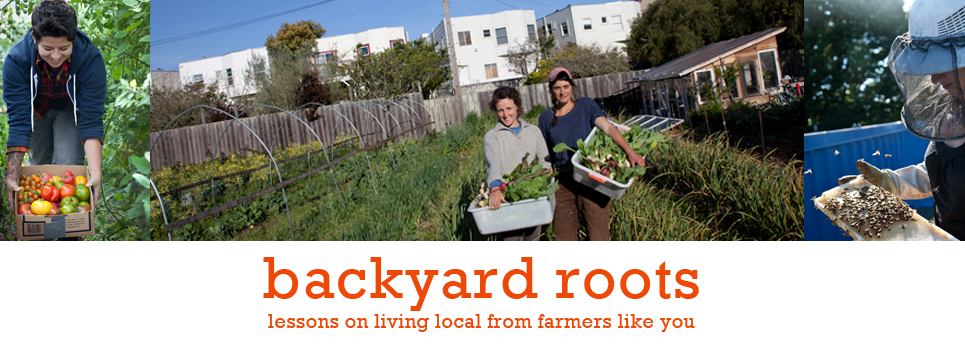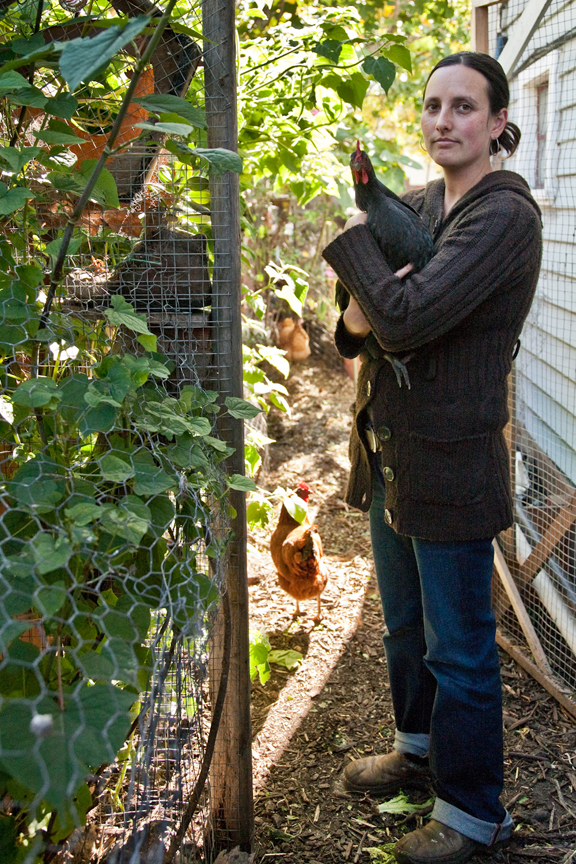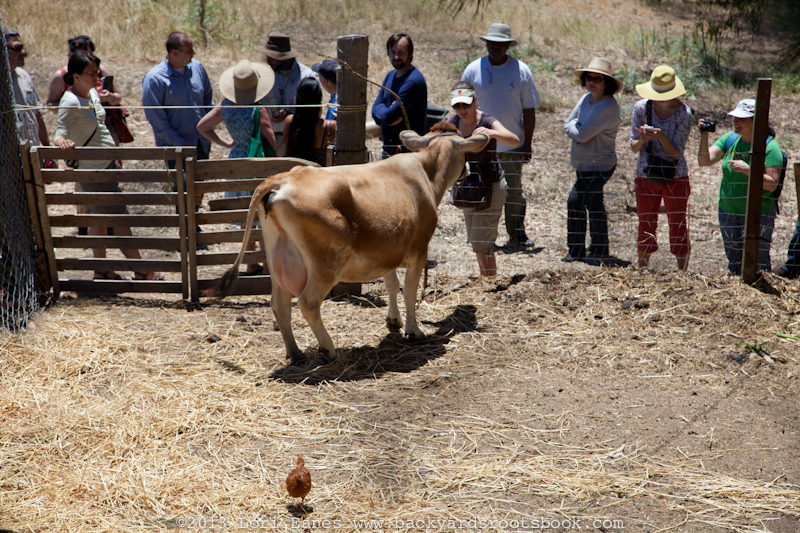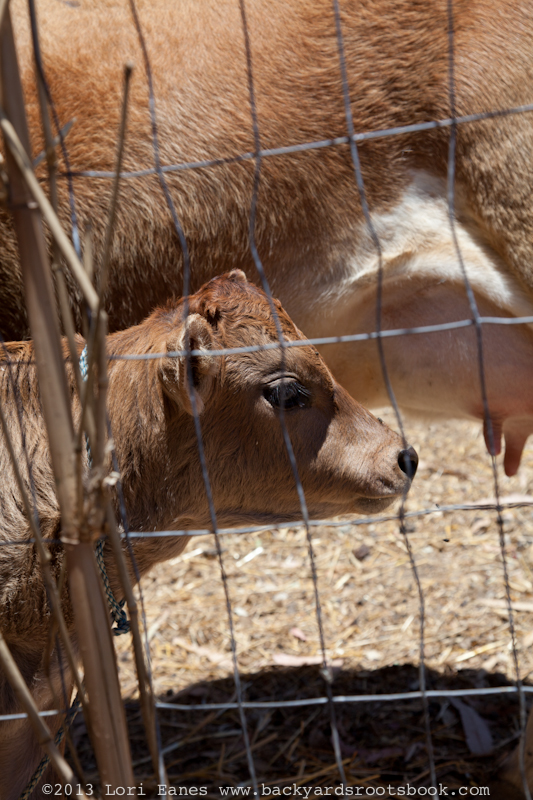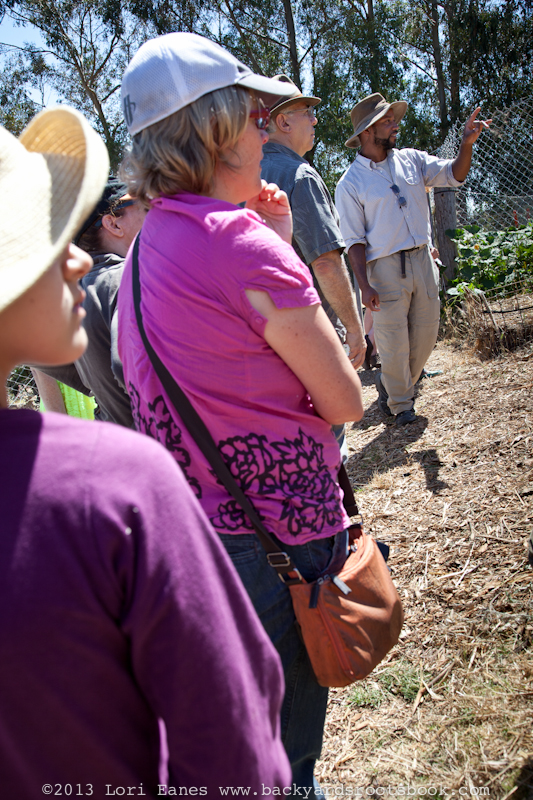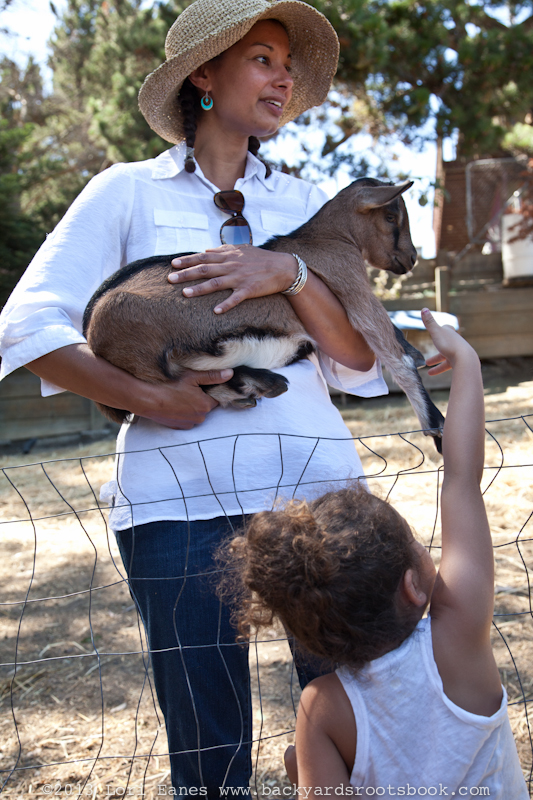The drought is really hitting us hard in California. Hills that are normally green with life this time of year are bone dry and dead. In my house, five minute showers are the new normal and I’m using dirty dishwater to water my plants. I think it’s finally time to get serious about greywater.
I learned a lot about grey water when I met Laura Allen who I wrote about in Backyard Roots. She spent four years changing greywater laws that now make simple laundry to landscape systems legal and permit-free in California. It’s a big deal considering just five years ago it was almost impossible to set up such a system. The system waters trees, bushes, and perennials (not vegetables) and works best if your garden is downhill from your washing machine (although your washing machine is capable of pumping water uphill a short distance.) It involves adding a vented three way valve at the highest point that will allow you to decide if you want to irrigate your yard or send the water down the drain. The valve is an important feature that lets you to shut it off if you want to use bleach, for example. Besides adding a valve and having the pipe exit your house directly you’ll need to plan a branched drain system and that’s where the fun begins (as in lots of digging) San Francisco has a very informative brochure that you can download for free that will tell you everything you need to know and you can find an installer or take a workshop at Greywater Action, the group that Laura helped start. Putting in a greywater system is a way to really make a difference in your water usage and with a well-planned system it will last years.
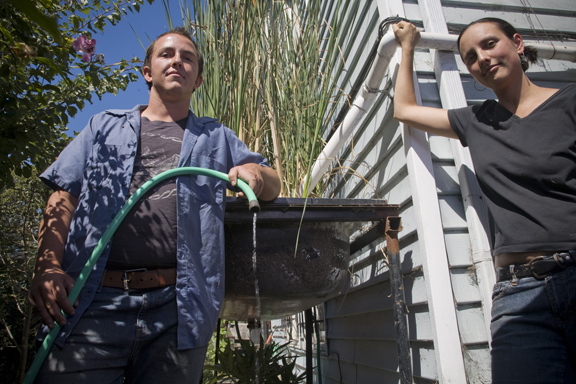
Laura Allen (right) with roommate Cleo Woelfle-Erskine with their early greywater system that filtered the water through a bathtub filled with cattails. It’s much easier now.
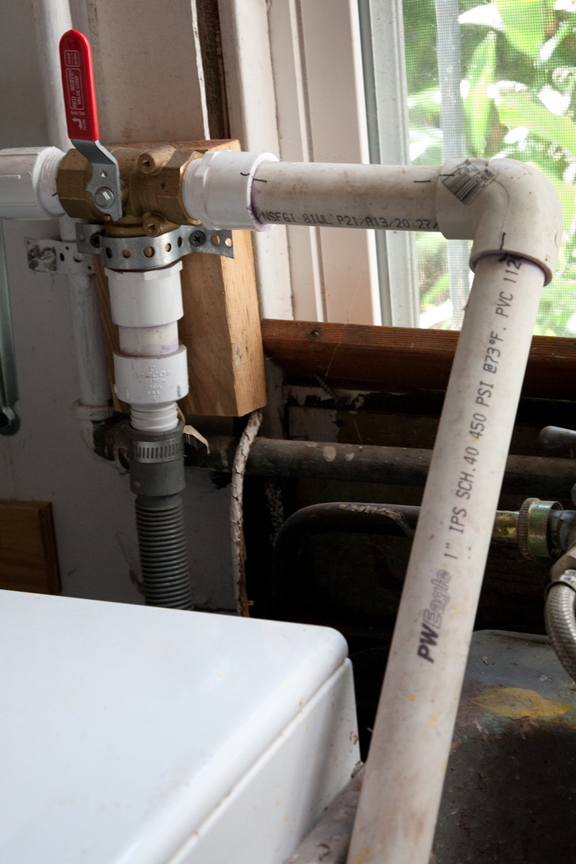
A three way valve above the washing machine allows you to decide if you want to irrigate your garden.
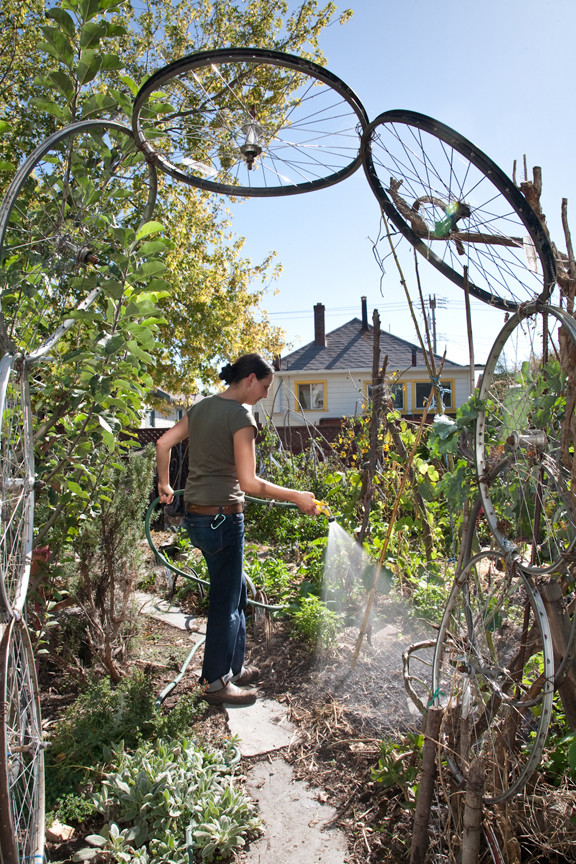
The simple laundry to landscape system works for tree, bushes and perennials. For edibles you’ll still need to use either rainwater or tap water.
